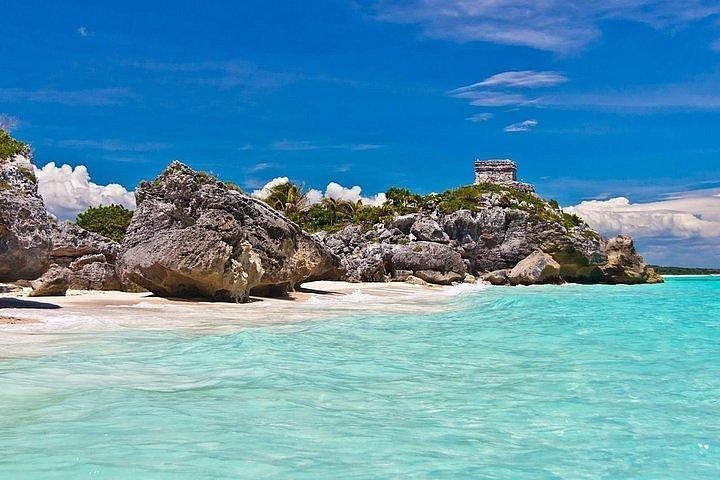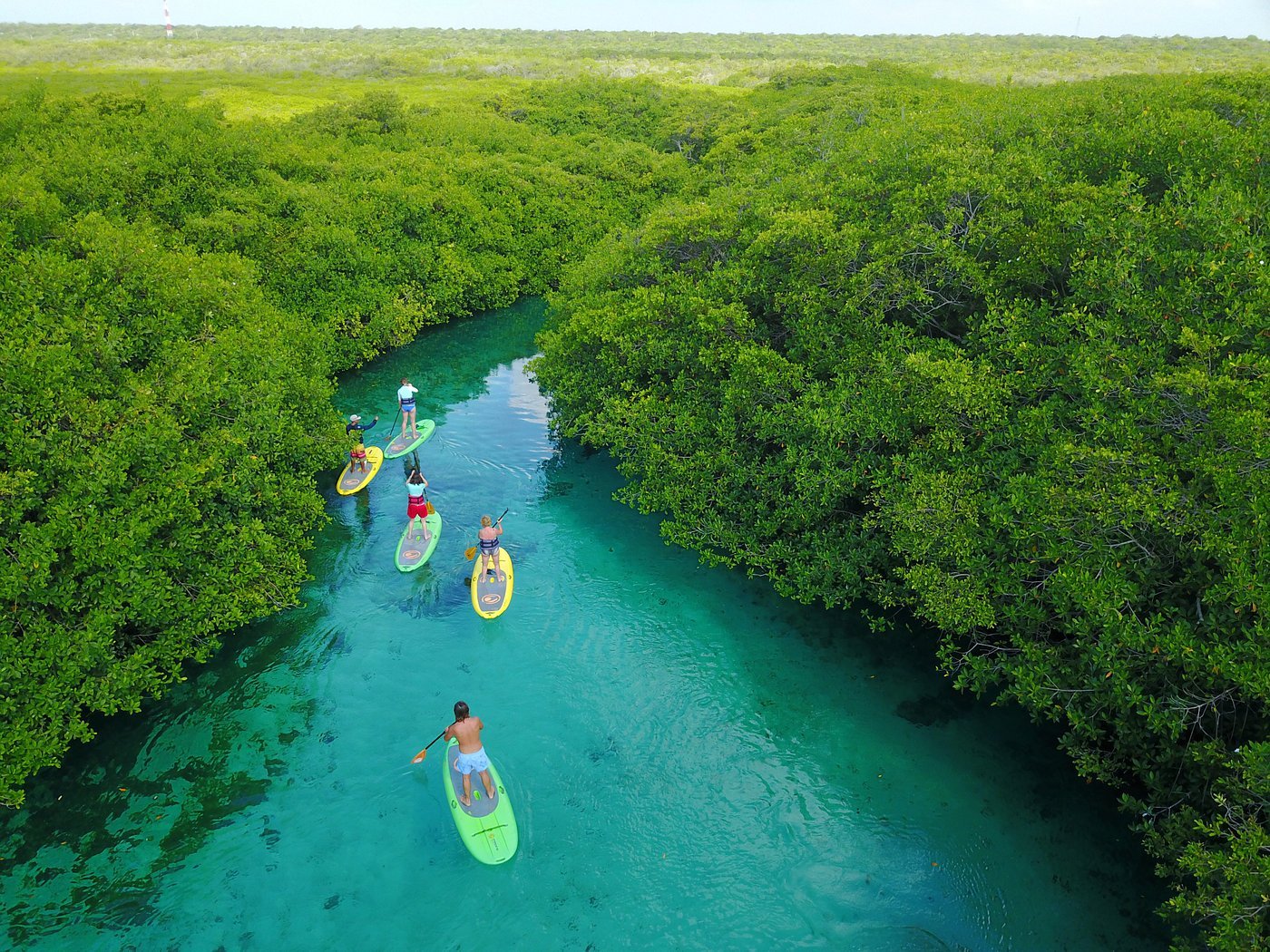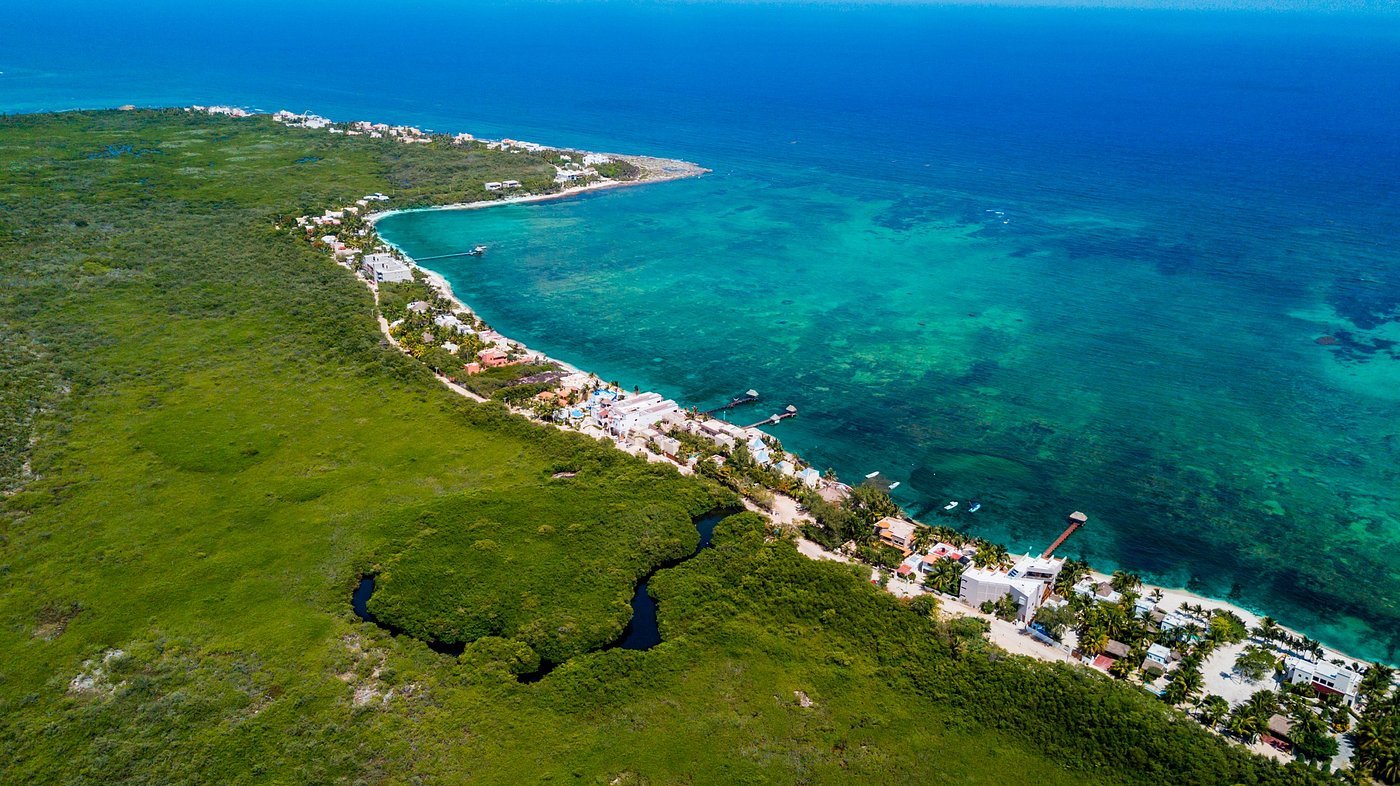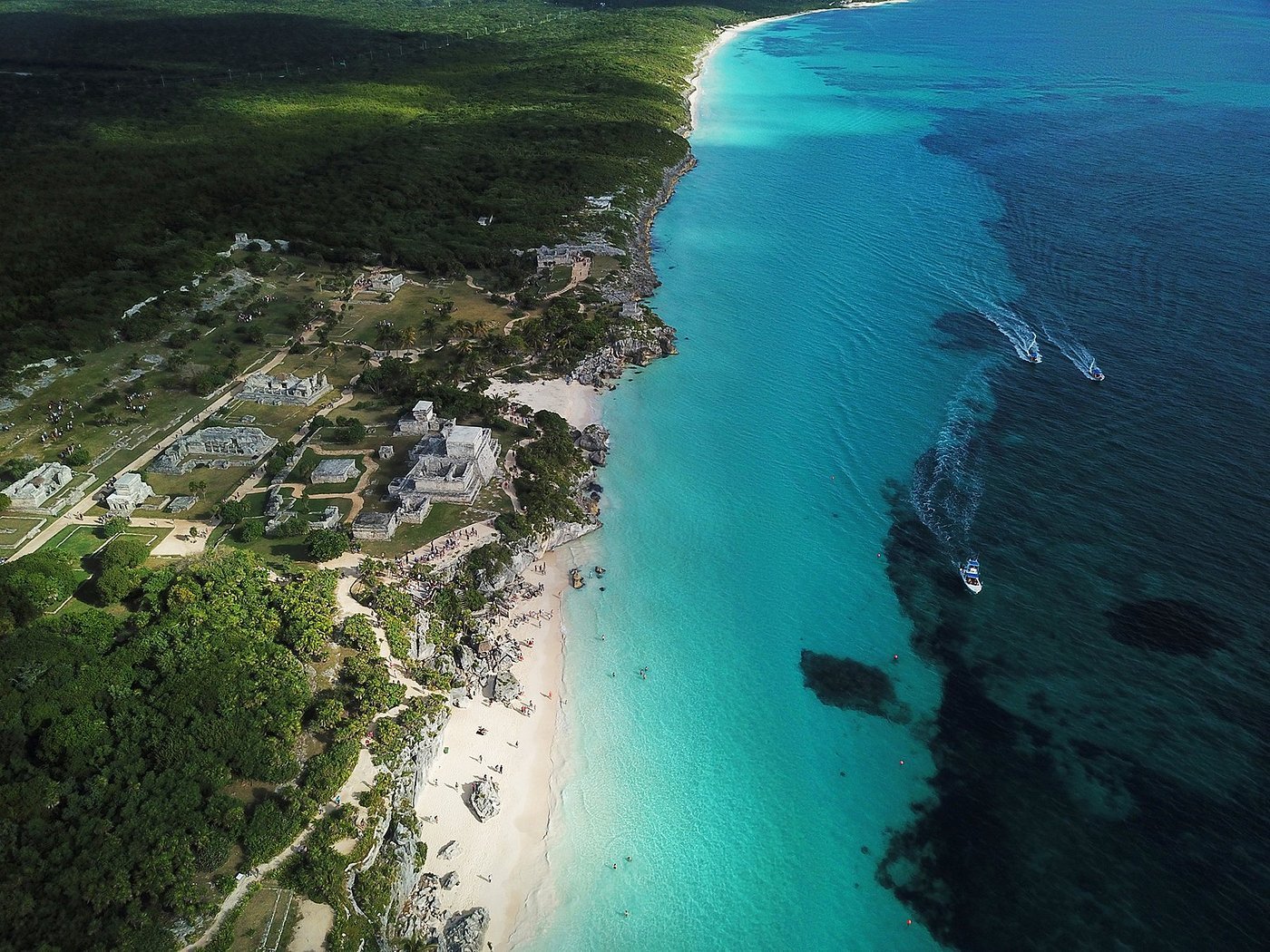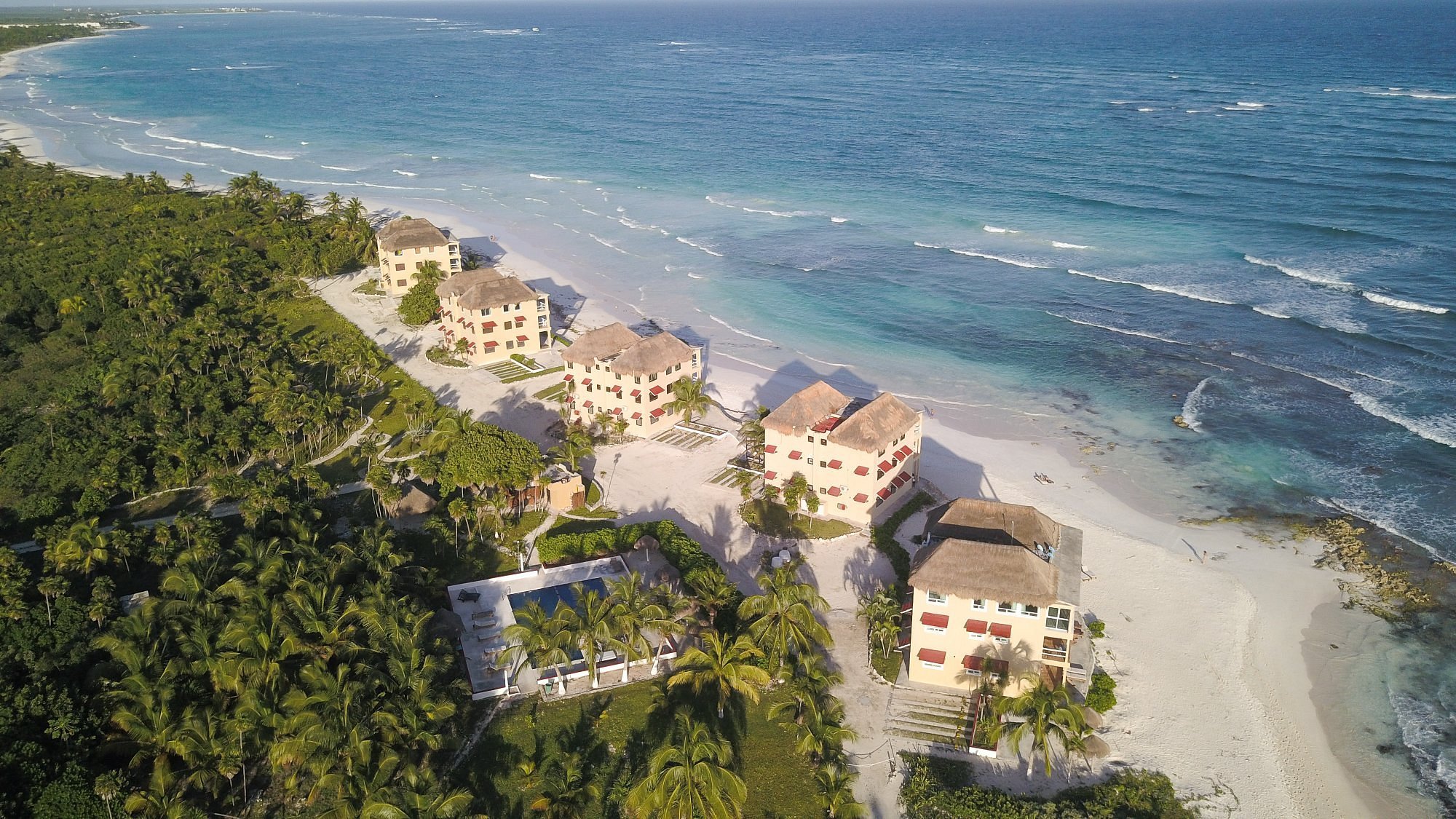Tulum
Quintana Roo, Mexico
Tulum prospered, especially under Mayapán influence from around 1200 CE, and was an important center, trading in typical barter goods of the period such as cotton, foodstuffs, copper bells, axes, and cacao beans. The site survived the general Maya collapse and was largely unaffected by the Spanish because it was protected by the jungle of Quintana Roo.
For a long time, this small town was only a stopover on the way north of the region. Tulum Pueblo expanded significantly as tourism in Quintana Roo increased, becoming a popular tourist destination. The hotel development boom began in 2015 when the town was named "Pueblo Magico" (magical town).
As recently as the early 1990s Tulum was a quiet village 2 km (1.5 mi) from the archaeological site, and tourism outside of the ruins was limited to a few small shops and simple cabañas on the beach. As of the 2020 census, the population of Tulum municipality has grown to 46,721 permanent inhabitants with the addition of several residential developments in the jungle areas nearest Tulum's downtown. The town is becoming increasingly popular due to an increase in tourism, vacation rentals, small hotels, and hostels, as well as restaurants and bars. Tulum town has grocery stores, boutiques, bicycle rentals, gyms, tour operators, banks, ATMs, internet cafes, and a variety of other commercial stores. Meztli Spanish Language School and Jardín Español are two popular Spanish language schools in Tulum.
Hotel District
The "hotel zone" of boutique hotels and eateries on Tulum beach has expanded to about 70 hotels and is located two kilometers from the town center. Although there are some more upscale hotels among them, most of them are cabañas constructed in the classic Maya style with thatched palm roofs. Particularly on the road's jungle side, there are several new eateries, some of which have garnered high accolades from the international press. A few public beaches and beach clubs are also present. The low-cost hammock-equipped cabañas that were once rentable is no longer accessible due to the location's rising popularity; instead, prices have skyrocketed, especially in the "hotel zone." The majority of accommodations continue to be rustic, but electricity in the "hotel zone" arrived in 2020 with most of the hotels and main restaurants now making use of it.
Famous archeological buildings in Tulum
There are three major structures of interest at the Tulum archeological site. El Castillo, the Temple of the Frescoes, and the Temple of the Descending God.
Tourism
The Tulum archaeological site is one of the best-preserved coastal Maya sites and is relatively small in comparison to several other nearby Maya sites. It is a well-liked Maya tourist destination in the Yucatán Peninsula due to its vicinity to contemporary tourism projects along the Mexican Caribbean coastline and its proximity to Cancun and the surrounding "Riviera Maya." A steady stream of tourists is brought to the location by daily tour buses. After Teotihuacan and Chichen Itza, the Tulum ruins are the third-most frequented archaeological site in Mexico, with over 2.2 million tourists in 2017.
Many cenotes, including Maya Blue, Naharon, Temple of Doom, Tortuga, Vacaha, Grand Cenote, Abejas, Nohoch Kiin, Calavera, and Zacil-Ha, are situated in the Tulum region.
The Sian Ka'an biosphere reserve, the archaeological site, the pueblo (or village), and the “zona hotelera” (or hotel zone) make up the four main sections of the tourist destination.
Growing debate surrounds the effect of tourism on Tulum. To expose the negative environmental effects of the regional tourism sector, director Rachel Appel produced the documentary "The Dark Side of Tulum" in 2018.
Tulum, located on the east coast of the Yucatan peninsula in southern Mexico, was a significant Mesoamerican center with Maya and Toltec influences. Tulum was a major trading and religious center between the 11th and 16th centuries CE, and its dramatic location near the sea makes it one of Mexico's most evocative ancient sites.
Airport
A new international airport was announced to be located about 20 kilometers (12 miles) north of Tulum. The closing date for building contract bids was March 2011.
All Tulum Airport-related initiatives were no longer accessible through government websites as of April 2014, and once Andrés Manuel López Obrador was inaugurated as president in 2018, priority was given to the high-speed trans-peninsula train, the "Tren Maya."
The airport is expected to open in 2023 after plans were reinstated in more recent years.
Investment Boom In Tulum
Given the following key factors: the low Mexican peso, Mexico’s extremely low property taxes, the significant increase in tourism, and the tremendous surge in condos, rentals, and luxury hotels. Tulum and the entire Riviera Maya are excellent places to invest right now. The very promising forecast for Mexico’s already strong economy in the coming years can only confirm this.




